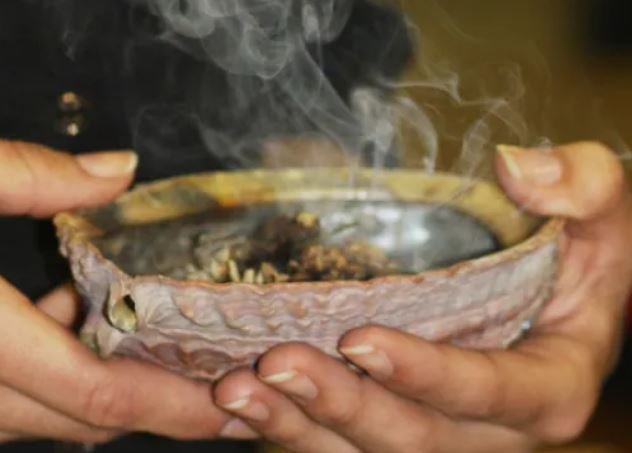Smudging Spaces with Aaron Tootoosis
Webinar hosted by Prairie Central District for Sport, Culture and Recreation
Have you observed the First Nations practice of smudging and wondered what it is, and why and how it’s done?
A recent webinar offered by Prairie Central District for Sport, Culture and Recreation invited Aaron Tootoosis, to present on the topic of Smudging Spaces. Tootoosis, a Plains Cree from Poundmaker Cree Nation, shared generously of his nehiyaw and oskapewis (helper) knowledge and teachings. The following information is condensed from that webinar.
Smudging is the First Nations’ traditional practice of burning certain plants and using the resulting smoke for prayer and purification. These plants are also commonly called medicines because of their healing powers for the physical, emotional, spiritual and mental aspects of a person’s well-being. The four main medicines used for smudging are tobacco, sage, sweetgrass and cedar. These medicines all have unique characteristics and healing properties and can be used alone or together depending on what is needed.

According to Tootoosis, nehiyawak (Cree people) have used smoke as medicine for thousands of years. The act of smudging is not a ceremony in and of itself, but a way to cleanse one’s energy in preparation for ceremony or any other important event or activity. Many smudge twice a day: in the morning to pray, to give thanks and to prepare for the day ahead, and at night, to release any negative energy from the day, and to once again lift up prayers.
Smudging is also used to cleanse the energy in a space such as a home or office, or any negative energy connected to an item. For instance, a used item can be smudged to ensure any negative energy attached to that item is released before you bring it home. Food is also often smudged at gatherings in advance of being eaten. If an office or indoor public space is being smudged, the facilities manager should be consulted to ensure the space is appropriate, as most buildings will have smoke alarms or sprinkler systems that could be triggered.
The practice of smudging involves placing the medicine(s) into a fireproof vessel, like a mini cast-iron pan or an abalone shell, and then lighting it with matches. Tootoosis explained that matches are used instead of lighters, as the flint found within a lighter has a spirit that is often used in a harmful way. Once lit, the medicine will smolder and produce wisps of smoke that is then fanned over the person’s head and body with cupped hands. Another teaching that Tootoosis shared is that one should never blow on the medicines to keep them lit as this may have unintended negative consequences. Instead, gentle fanning with a feather or a hand will help the smudge stay lit. As the smoke rises, it is believed to carry words and prayers to the Creator.
Tootoosis also described how people get or access the plants for smudging. For instance, medicines are picked by hand by people who have learned how to find and harvest them in a good way. In a good way means smudging one’s self before picking the plant to ensure energy and intent is pure, and then making an offering of tobacco to the medicine to ask for its permission to be picked for our benefit, and as a gift to honour its spirit. It also means that great care is taken with respect to how the plant is picked. Each plant has a certain time when it can be harvested, as well as its own particular way it should be picked to ensure the plant will grow back. An important consideration is to get permission from landowners, if the medicines are on private property.
While some medicines, like sage, grow freely throughout Saskatchewan, Tootoosis says finding them can be difficult. Some families and communities have their own “stashes” that they keep secret. Other folks, like those living in urban areas without access to the land, may get the medicines through trade, which is the right way (besides picking them yourself). Medicines should never be purchased because you can’t be sure they were picked properly.
Tootoosis recommends connecting with a Knowledge Keeper to find out about the medicines in your area and how to pick them properly. He encourages people to really consider the value of the knowledge you are asking for, and then to offer gifts such as tobacco and blankets, in exchange for that knowledge.
Video Resource: https://youtu.be/6fIMumk2cnA

